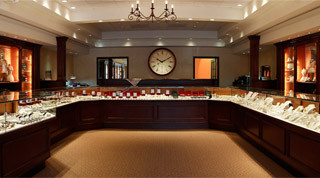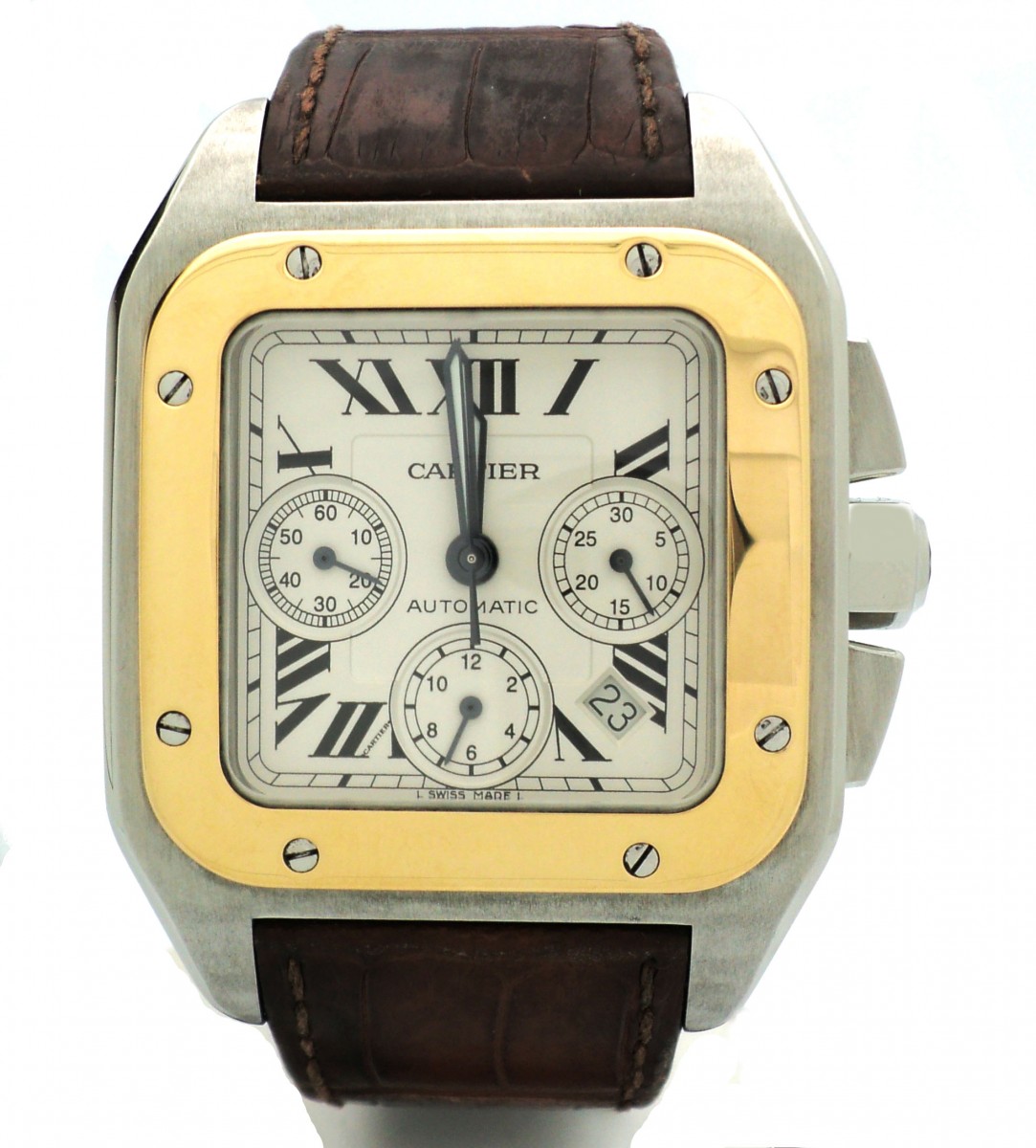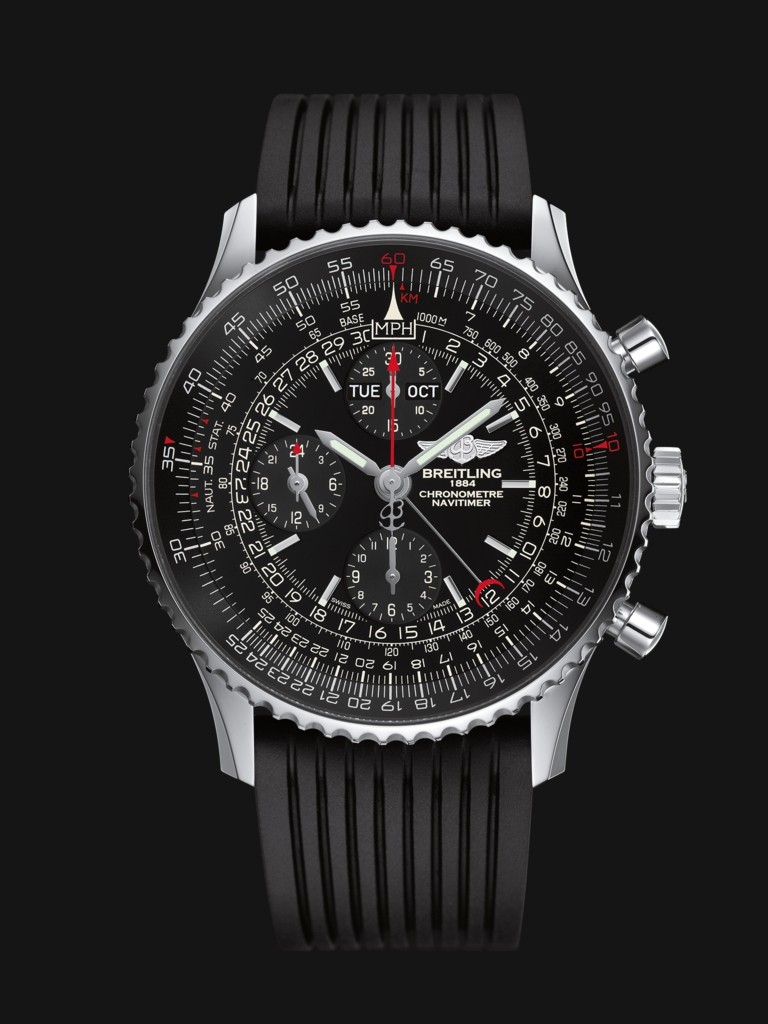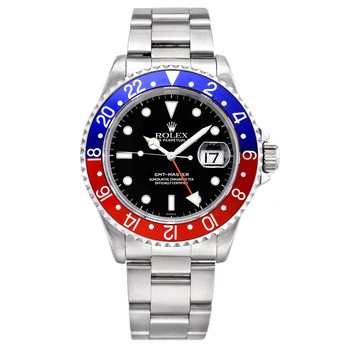Pilot’s Watches
In the early years of aviation, the high-tech instrument panel that is ubiquitous in airplane cockpits today was decades away. Navigation was achieved using charts, maps and manual calculation. Pilots needed an accurate watch to track fuel burn, time flight legs, and calculate distance. Timing was of crucial importance.
The first aviator watch is born
The early watches that pilots wore were pocket watches adapted to strap to the wrist so they could be read at a glance. In 1904, Louis Cartier created a wrist strap watch for his great friend, Alberto Santos Dumont, a Brazilian pilot living in Paris. Dumont had told Cartier that it was difficult to read his pocket watch during flight. Cartier promptly modified Dumont’s watch by adding a strap and buckle. That watch is widely recognized as the first known wristwatch. In 1904, Cartier named a collection of watches “Santos” after the famed pilot. Today the collection retains some of the design details of the original timepiece.
Other watchmakers quickly followed suit, first attaching straps to traditional pocket watches and later creating timepieces specifically for flight. Ease of readability and precision were equally important in these timepieces, so large cases with large numerals were designed. A larger movement and balance wheel lent greater precision. The crowns of these early watches were also enlarged so the watch could be set and wound without taking gloves off in the cold temperatures of high altitudes. These “onion” crowns are still popular today, but more for decorative purposes than practicality.
A watch with longitude
In 1921, Longines partnered with Charles Lindbergh on a wristwatch that also incorporated a sextant to calculate longitude. In the 1930s, the company was commissioned by the Czechoslovakian Air Force to develop pilot watches for WWII. Durable and easy to read with their oversize numerals, the watches have become a staple of the brand’s production, known as the Heritage Military collection.
IWC jumped on the bandwagon of making pilot watches in the 1930s. Their oversized timepieces have become a style icon in modern watchmaking, with large numerals and crowns on many models. IWC’s pilot watch collections include the Spitfire, Top Gun (after the Tom Cruise movie) and Antione de Saint Exupéry, after the author of The Little Prince, who also was an accomplished pilot.
Breitling and the Royal Air Force
Breitling also has a long history with aviation, having first produced pilot watches for the British Royal Air Force in 1936. The Navitimer series features a circular slide rule on the bezel for speed calculation. The newer models, dubbed Navitimer 1884, boast a COSC-rated Breitling movement.
Speaking of COSC (Contrôle Officiel Suisse des Chronomètres), Rolex’s GMT Master is a prime example of a navigational watch with a 24-hour bezel for setting Greenwich Master Time (GMT). The bezel can be set to GMT (or any other time zone), allowing the owner to see the time in two places at once. This piece is a favorite for frequent travelers who want to keep track of “home” and “local” time.
Time for travel
As you plan your spring and summer travels, consider a pilot watch to add style and convenient functionality to your trip essentials. We have several options for you to choose from and are always happy to help you find the watch that matches your sense of adventure.
situs togel
situs togel
bandar togel
https://www.davisvanguard.org/
togel online
situs toto
situs toto
bandar togel
situs togel
situs togel resmi
situs toto
bandar togel resmi
bandar togel
bento4d
situs toto
situs togel
situstoto
bandar togel online
toto togel
situs toto
situs togel
situs togel
situs toto
bento4d
bento4d
bandar togel
situs toto slot
rtp live
bento4d
toto slot
situs togel
situs toto
situs toto
situs togel
bandar togel
toto slot
situs toto
https://pafibengkuluutarakab.org
https://pafiboalemokab.org
https://pafibulelengkab.org
https://pafibungokab.org
https://pafibuolkab.org
https://pafikablubuklinggau.org
https://pafikabpenukal.org
https://pafikabsumsel.org
https://pafikabtanahselatan.org
https://pafikabtanjungjabungselatan.org
https://pafikabupatenacehbarat.org
https://pafikabupatenacehjaya.org
https://pafikabupatenacehutara.org
https://pafikabupatenkaro.org
https://pafikotapalangka.org
https://pafikotaserong.org
https://pafimusirawaskab.org
https://pafipahuwato.org
https://pafipangkajenekepulauan.org
https://pafipcbatanghari.org
https://pafipccirebonkab.org
https://pafipckotajabar.org
https://pafipcpaser.org
https://pafipcpulaudeli.org
https://pafipcsarolangun.org
https://pafipemkobangli.org
https://pafipemkoserangkota.org
https://pafipemkotkerinci.org
https://pafipemkotpalopo.org
https://pafipemkotpasuruan.org
https://pafipemkobandaaceh.org/
https://pafipemkonusantara.org/
https://pafipemkosorong.org/
https://pafipemkopekanbaru.org/
https://pafipemkomobagu.org/
https://pafipemkopadangpanjang.org/
https://pafipemkopayakumbuh.org/
https://pafipemkosawahlunto.org/
https://pafipemkolubuklinggau.org/
https://pafipemkopagaralam.org/
https://pafipemkosubulussalam.org/
https://pafipemkoprabumulih.org/
https://pafipemkogunungsitoli.org/
https://pafipemkopadangsidimpuan.org/
https://pafipemkopematangsiantar.org/
https://pafipemkotidorekepulauan.org/
https://pafipulaupini.org/
https://pafipulausamosir.org/
https://pafipulaupadang.org/
https://pafipulausalahnama.org/
situs togel
bandar togel
situs toto
situs toto
togel online
situs toto
situs toto macau
toto togel
situs togel
bandar toto
situs toto
toto slot
toto togel
situs toto
bandar togel
situs toto
situs toto
situs togel resmi
situs togel
togel online
situs togel
situs togel resmi
link togel
toto togel
bandar togel
situs toto
situs togel resmi
bandar togel online
slot online
situs togel online
agen togel
situs togel online
situs togel
situs toto togel
situs togel resmi
situs togel resmi
bo togel
situs togel resmi
bandar togel
situs togel
situs toto
situs togel
bo togel
situs toto
toto togel
situs toto
toto togel
toto slot
situs toto
toto slot
situs toto
situs togel
situs toto
situs toto
situs toto
situs togel
https://www.kimiafarmabali.com/
https://www.kimiafarmabanten.com/
https://www.kimiafarmabanten.com/
https://www.kimiafarmabatam.com/
https://www.kimiafarmabogor.com/
https://www.kimiafarmajambi.com/
https://www.kimiafarmalampung.com/
https://www.kimiafarmamedan.com/
https://www.kimiafarmapalembang.com/
https://www.kimiafarmapontianak.com/
https://www.kimiafarmariau.com/
https://www.kimiafarmasurabaya.com/
togel
situs toto
situs toto
prediksi hk
situs toto
togel online
toto macau
toto togel
toto macau
situs toto
toto macau
situs togel
situs toto
toto togel
situs toto
situs toto
situs toto
situs toto
situs toto
situs toto
situs toto
situs toto
situs toto
toto slot
toto macau
toto macau
situs toto
situs toto
toto togel
situs toto
toto slot
slot gacor
situs toto togel






